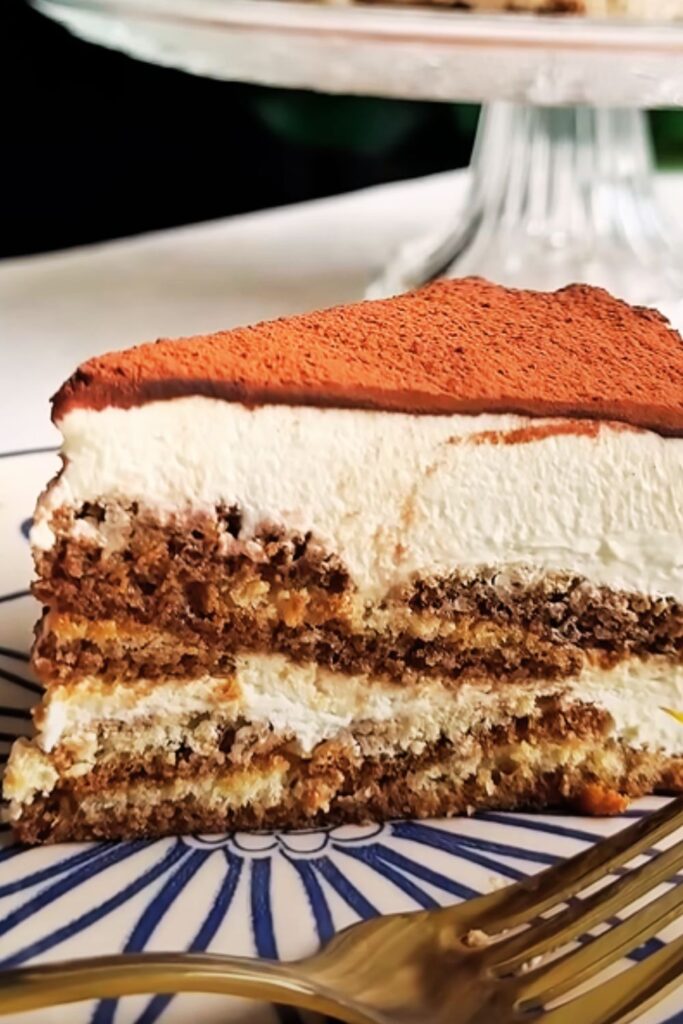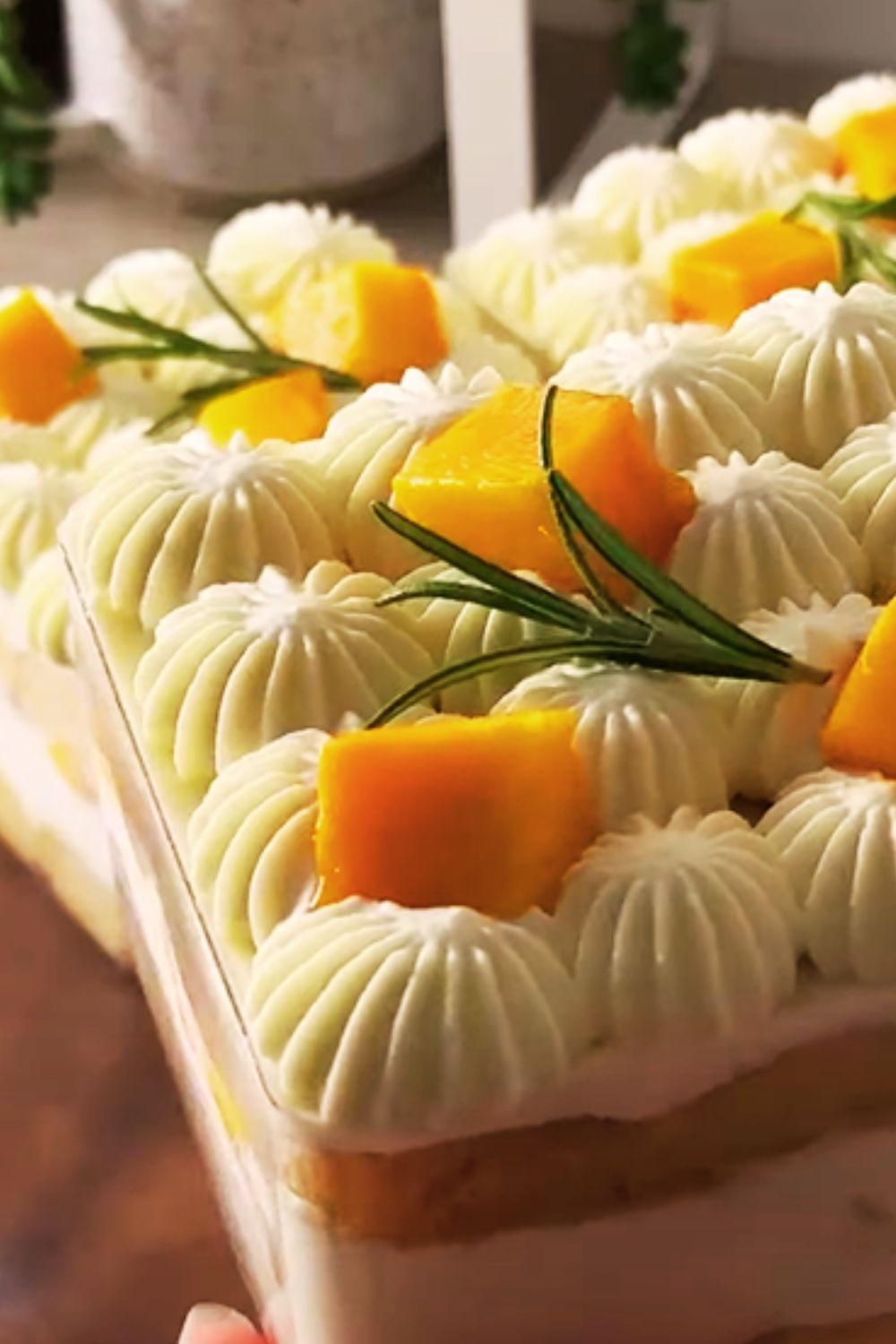There’s something magical about the first spoonful of a perfectly crafted tiramisu. The delicate balance of coffee-soaked ladyfingers, creamy mascarpone filling, and that dusting of cocoa powder creates a dessert experience that’s simply unforgettable. I’ve spent years perfecting my tiramisu recipe, and today I’m sharing all my secrets for creating this iconic Italian dessert that will impress even the most discerning palates.
The History Behind This Beloved Italian Classic
Tiramisu, which translates to “pick me up” or “cheer me up” in Italian, has a somewhat contested history. While many believe it originated in the Veneto region of Italy in the 1960s, others trace its roots back to Tuscany or even Piedmont. Regardless of its exact origins, this coffee-infused treat has become one of the most beloved Italian desserts worldwide.
The traditional tiramisu consists of layers of coffee-soaked ladyfingers (savoiardi) and a creamy mixture of eggs, sugar, and mascarpone cheese, all topped with a dusting of cocoa powder. What makes this dessert so special is its perfect balance of flavors and textures – the slight bitterness of the coffee, the sweetness of the cream, and the soft yet structured layers that hold together beautifully when sliced.
Essential Ingredients for Authentic Tiramisu
Before we dive into the recipe, let’s talk about the key ingredients that make or break a tiramisu:
Mascarpone Cheese : The star of the show, mascarpone is an Italian cream cheese with a rich, buttery texture. Unlike American cream cheese, it’s less tangy and has a higher fat content, giving tiramisu its luxurious mouthfeel. Always use full-fat mascarpone at room temperature for the smoothest texture.
Ladyfingers (Savoiardi) : These light, dry sponge cookies serve as the structural element of tiramisu. Traditional Italian savoiardi are drier and more porous than many American versions, making them ideal for soaking up the coffee without becoming soggy.
Eggs : The debate over raw eggs in tiramisu is ongoing. My recipe includes a gently cooked egg yolk mixture (zabaglione) for food safety without compromising on flavor or texture. The eggs provide richness and help stabilize the cream.
Coffee : Strong espresso or strongly brewed coffee is essential. The coffee should be cooled before using, and its intensity will determine how pronounced the coffee flavor is in your final dessert.
Cocoa Powder : Use high-quality unsweetened cocoa powder for dusting. The slight bitterness balances the sweetness of the cream and adds that classic tiramisu finish.
Sugar : Granulated sugar sweetens the mascarpone mixture, while powdered sugar is often used in the whipped cream component.
Equipment You’ll Need
- 9×13-inch baking dish (glass or ceramic works best)
- Electric mixer (stand or handheld)
- Double boiler or heat-safe bowl and saucepan
- Whisk
- Rubber spatula
- Shallow dish for dipping ladyfingers
- Sifter or fine-mesh strainer for cocoa powder
The Foolproof Tiramisu Recipe
Ingredients
For the zabaglione (egg yolk mixture):
- 6 large egg yolks
- ¾ cup granulated sugar
- ⅓ cup dry marsala wine (optional, can substitute with coffee)
- Pinch of salt
For the mascarpone mixture:
- 16 oz (450g) mascarpone cheese, room temperature
- 1½ cups heavy cream
- 2 tablespoons powdered sugar
- 1 teaspoon vanilla extract
For the assembly:
- 2 cups strong brewed espresso or coffee, cooled
- 2 tablespoons granulated sugar (to sweeten coffee)
- 36-40 Italian ladyfingers (savoiardi)
- ¼ cup unsweetened cocoa powder
- Dark chocolate shavings (optional)

Instructions
Step 1: Prepare the Zabaglione
- Create a double boiler by placing a heat-safe bowl over a saucepan with 1-2 inches of simmering water. Make sure the bowl doesn’t touch the water.
- In the bowl, whisk together egg yolks and sugar until combined.
- Add marsala wine (if using) and a pinch of salt.
- Continuously whisk the mixture over the simmering water for about 8-10 minutes, until it thickens enough to coat the back of a spoon and registers 160°F (71°C) on an instant-read thermometer.
- Remove from heat and continue whisking for another minute to cool slightly.
- Cover with plastic wrap directly touching the surface to prevent a skin from forming and let cool to room temperature.
Step 2: Prepare the Mascarpone Mixture
- In a large bowl, beat the mascarpone cheese until smooth and creamy, about 30 seconds.
- Gently fold the cooled zabaglione into the mascarpone until fully incorporated.
- In a separate bowl, whip the heavy cream with powdered sugar and vanilla extract until firm peaks form.
- Carefully fold the whipped cream into the mascarpone-zabaglione mixture in three additions, maintaining as much air as possible for a light texture.
Step 3: Prepare the Coffee Mixture
- Mix the cooled espresso or coffee with 2 tablespoons of sugar in a shallow dish wide enough to fit the ladyfingers.
- Taste and adjust sweetness if necessary.
Step 4: Assemble the Tiramisu
- Quickly dip each ladyfinger into the coffee mixture—about 1 second per side. The cookies should absorb some coffee but still maintain their structure.
- Arrange the soaked ladyfingers in a single layer at the bottom of your 9×13-inch dish, breaking some if needed to fit.
- Spread half of the mascarpone mixture evenly over the ladyfingers.
- Create a second layer of coffee-dipped ladyfingers.
- Top with the remaining mascarpone mixture, spreading it smoothly.
- Cover with plastic wrap and refrigerate for at least 6 hours, preferably overnight.
Step 5: Finish and Serve
- Just before serving, dust the top generously with cocoa powder using a sifter or fine-mesh strainer.
- Add chocolate shavings if desired.
- Cut into squares and serve chilled.

The Science Behind Perfect Tiramisu
What separates an exceptional tiramisu from a merely good one often comes down to technique and understanding the science behind the dessert:
The Optimal Soaking Time
The biggest mistake people make when preparing tiramisu is over-soaking the ladyfingers. When ladyfingers are submerged in coffee for too long, they become soggy and can disintegrate, resulting in a mushy dessert with poor structural integrity.
A quick 1-second dip per side is all you need. The ladyfingers will continue to absorb moisture as the tiramisu sets in the refrigerator. You want them to be moist but still firm enough to hold their shape when layered.
Temperature Control
Temperature plays a crucial role at several stages:
- Room-temperature mascarpone: Cold mascarpone can become lumpy when mixed, while properly softened mascarpone will blend smoothly.
- Cooking the zabaglione: Heating the egg yolk mixture to 160°F (71°C) is important for food safety without scrambling the eggs. The slow, indirect heat of a double boiler makes this possible.
- Cooling before assembly: Both the zabaglione and coffee should be completely cooled before assembly to prevent melting the mascarpone or whipped cream.
- Refrigeration time: The 6+ hour chilling period is non-negotiable. This time allows the flavors to meld and the dessert to set properly.
The Importance of Proper Folding
When combining the whipped cream with the mascarpone-zabaglione mixture, gentle folding is essential to maintain the air bubbles that give tiramisu its light, mousse-like texture. Use a rubber spatula and a gentle hand to preserve the volume you’ve created during whipping.
Tiramisu Variations and Troubleshooting
Common Tiramisu Issues and Solutions
| Problem | Possible Cause | Solution |
|---|---|---|
| Runny filling | Overmixing mascarpone | Mix mascarpone minimally until just smooth |
| Underwhipped cream | Whip cream to firm peaks before folding | |
| Insufficient chilling time | Allow at least 6 hours in refrigerator | |
| Soggy ladyfingers | Excessive soaking in coffee | Dip quickly, just 1 second per side |
| Coffee mixture too hot | Ensure coffee is completely cooled | |
| Grainy texture | Curdled mascarpone | Use room temperature mascarpone |
| Overcooked egg yolks | Use gentle heat and constant whisking | |
| Bitter taste | Too much cocoa powder | Apply a thin, even layer |
| Coffee too strong | Adjust coffee strength or add more sugar | |
| Bland flavor | Insufficient chilling time | Flavors develop during refrigeration |
| Under-seasoned zabaglione | Add a pinch of salt to enhance flavors |
Creative Variations
While traditional tiramisu is perfect as is, here are some delicious variations you might enjoy:
Fruit-infused Tiramisu : Add a layer of sliced strawberries or raspberries between the cream layers for a refreshing twist. The acidity of the berries cuts through the richness beautifully.
Chocolate Tiramisu : Add 1/4 cup cocoa powder to the mascarpone mixture and use chocolate-flavored liqueur instead of marsala for an extra chocolatey version.
Lemon Tiramisu : Replace the coffee with limoncello diluted with lemon syrup, and add lemon zest to the mascarpone mixture for a bright, citrusy alternative.
Mocha Tiramisu : Add 2 tablespoons of chocolate syrup to your coffee mixture for a mocha-flavored dip.
Alcohol-Free Version : Simply omit the marsala and use additional vanilla extract or almond extract for flavor.
Make-Ahead and Storage Tips
One of the best things about tiramisu is that it actually improves with time. Here’s how to make the most of this make-ahead dessert:
Optimal Timeline
- 6 hours before serving: Minimum chilling time for flavors to develop
- 24 hours before serving: Ideal chilling time for perfect texture and flavor melding
- Up to 3 days ahead: Maximum recommended make-ahead time for best quality
Storage Guidelines
| Storage Method | Maximum Duration | Notes |
|---|---|---|
| Refrigerator (covered) | 3-4 days | Flavor peaks at 24 hours, then gradually declines |
| Freezer (well-wrapped) | 2-3 months | Thaw overnight in refrigerator before serving |
Serving Suggestions
Tiramisu is delicious on its own, but you can elevate the presentation with:
- A fresh dusting of cocoa powder just before serving
- Chocolate-covered espresso beans on top
- Fresh berries on the side
- A small scoop of vanilla gelato
- A shot of espresso served alongside (for coffee lovers)

Nutritional Information
While tiramisu is undeniably an indulgent dessert, it’s good to know what you’re consuming. Here’s the approximate nutritional breakdown per serving (assuming 12 servings from this recipe):
| Nutrient | Amount per Serving |
|---|---|
| Calories | 420 |
| Total Fat | 32g |
| Saturated Fat | 19g |
| Cholesterol | 215mg |
| Sodium | 95mg |
| Total Carbohydrates | 28g |
| Dietary Fiber | 1g |
| Sugars | 18g |
| Protein | 7g |
Frequently Asked Questions
Q: Can I make tiramisu without alcohol?
Absolutely! The alcohol is completely optional. Simply omit the marsala wine and use additional coffee in the zabaglione, or substitute with a non-alcoholic vanilla or almond extract for flavor.
Q: Is it safe to eat tiramisu with raw eggs?
Traditional tiramisu does contain raw eggs, which poses a small risk of salmonella. My recipe includes a step to cook the egg yolks to 160°F (71°C), which eliminates this risk while maintaining the custard-like texture. If you’re still concerned, you can use pasteurized eggs or egg products.
Q: How far in advance can I make tiramisu?
Tiramisu actually improves with time! It can be made up to 3 days in advance and kept refrigerated. The flavors will continue to develop, and the texture will set beautifully. Just wait to dust with cocoa powder until right before serving.
Q: Why did my mascarpone mixture curdle?
Mascarpone can curdle if it’s too cold when mixed or if it’s overmixed. Always bring mascarpone to room temperature before using, and mix it just until smooth before folding in other ingredients.
Q: Can I freeze tiramisu?
Yes, tiramisu freezes surprisingly well. Wrap it tightly in plastic wrap and aluminum foil, then freeze for up to 3 months. Thaw overnight in the refrigerator before serving, and add a fresh dusting of cocoa powder.
Q: What can I substitute for mascarpone cheese?
While mascarpone is traditional, you can make a substitute by blending 8 oz cream cheese with 1/4 cup heavy cream and 2 tablespoons sour cream. It won’t be exactly the same, but it comes close.
Q: My ladyfingers dissolved in the coffee. What happened?
You likely soaked them too long. The dip should be very quick—just about 1 second per side. Also, make sure you’re using proper savoiardi cookies, which are drier and more sturdy than some American-style ladyfingers.
Q: Can I use instant coffee instead of espresso?
Yes, but make it stronger than you would normally drink it. Dissolve 2-3 tablespoons of instant coffee in 2 cups of hot water, then cool completely before using.
The Secret to Truly Memorable Tiramisu
After years of making this dessert, I’ve found that the real secret to exceptional tiramisu isn’t just in the ingredients or technique—though those are certainly important. It’s in understanding the balance of flavors and textures that make tiramisu so beloved.
The slight bitterness of the coffee should complement the sweetness of the cream without overwhelming it. The ladyfingers should provide structure while melting in your mouth. The cocoa powder should cut through the richness with its earthy notes.
When these elements come together in perfect harmony, you have more than just a dessert—you have an experience. And isn’t that what great cooking is all about? Creating moments of joy that linger long after the last bite is gone.
So take your time with this recipe. Pay attention to the details. And most importantly, enjoy the process of creating something truly special that will bring smiles to the faces of everyone who takes a bite.
Happy baking!




